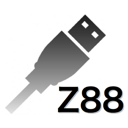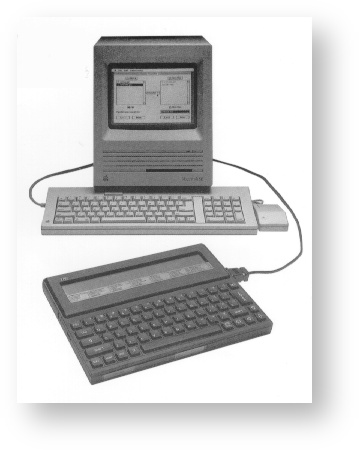 EazyLink2 User Guide
EazyLink2 User Guide
Welcome!
Feedback is most welcome, to help us improve EazyLink
History, Introduction & Now
In 1987, there were many computers, but no established standard to connect them together, unlike today with the internet. The Z88 connected to other computers using the RS-232 serial port to connect with a cable to the Desktop Computer. Data transfer was achieved using its own Imp-Export program. Cambridge Computer produced BBC (for the BBC Micro) and PC Link (for the IBM PC) which included the cable and software to run on these computers. Other computers were supported Amiga, Nimbus and QL (just to mention a few) by third parties. Different programs use different protocols, that is the way they talk to each other. Here is a small summary that the communication path followed and where Eazylink fitted into it.
PC Link was the first program from Cambridge Computer. It was designed for the IBM PC running under DOS. The software supplied came on a 5-1/4" disk and the connecting cable was the 9/25 'D' type. It used Imp/Exp, the 'built-in' popdown on the Z88.
Z88 BBC Link also from Cambridge Computer, was designed for the BBC Micro. The software supplied came on a different type of 5-1/4" disk.The connecting cable was the 9 'D' and a 'Domino' 5 pin DIN Plug. It also used Imp/Exp, the 'built-in' popdown on the Z88.
Imp-Export is reliable, but is slow, limited in functions, and requires the user to have access to both the Z88 and PC or BBC keyboards to issue the commands for transferring files. Larger memory devices and the use of directories needed more commands.
PC Link II was the answer to this, another DOS program but it required an additional popdown to be run on the Z88. This was supplied on a 32K EPROM card labelled PC LINK. All commands were sent from the PC Computer as additional protocol commands were used. It was supplied initially with the 9/25 'D' type connecting cable but later on with the 9/9 'D' type as more PCs moved over to the smaller size 'D' plug.
MAC Link used the same 32K EPROM card only labelled MAC LINK. All commands were sent from the MAC. It was supplied with the 9 'D' type to an 8 pin mini plug to fit in the MODEM port.
Eazylink used a different 32K EPROM card that was compatible with PC and MAC Link, introduced faster transfer and additional commands. Character translation, required when using the foreign Z88s, was done on the Z88 during the transfer eliminating conversions as a separate operation. It was supported on the PC running from Windows 98 but was retired in April 2014 together with Windows xp.
Eazylink2 is supplied either on a 32K EPROM card or in OZ 4.5+ for the Z88. The additional popdown gives the full facilities of Eazylink2 and file checking if they are required. When used with OZ 4.5 or above, the restricted transfer speed of 9600 baud on the standard Z88 is broken. The theoretical maximum speed of 38400 baud is achieved. Future enhancements to Eazylink2 will be done in the OZ version only.
Download the re-written Desktop software from our EazyLink Client page, for different operating systems. Windows (XP and above), Mac and Linux are supported. The 'built-in' Z88 software protocol Imp-Export is there, allowing the user to start transferring files straight away (with the correct cables). This means theoretically, the BBC Micro could also be used if connected to the Desktop using the BBC Link software stated above.
